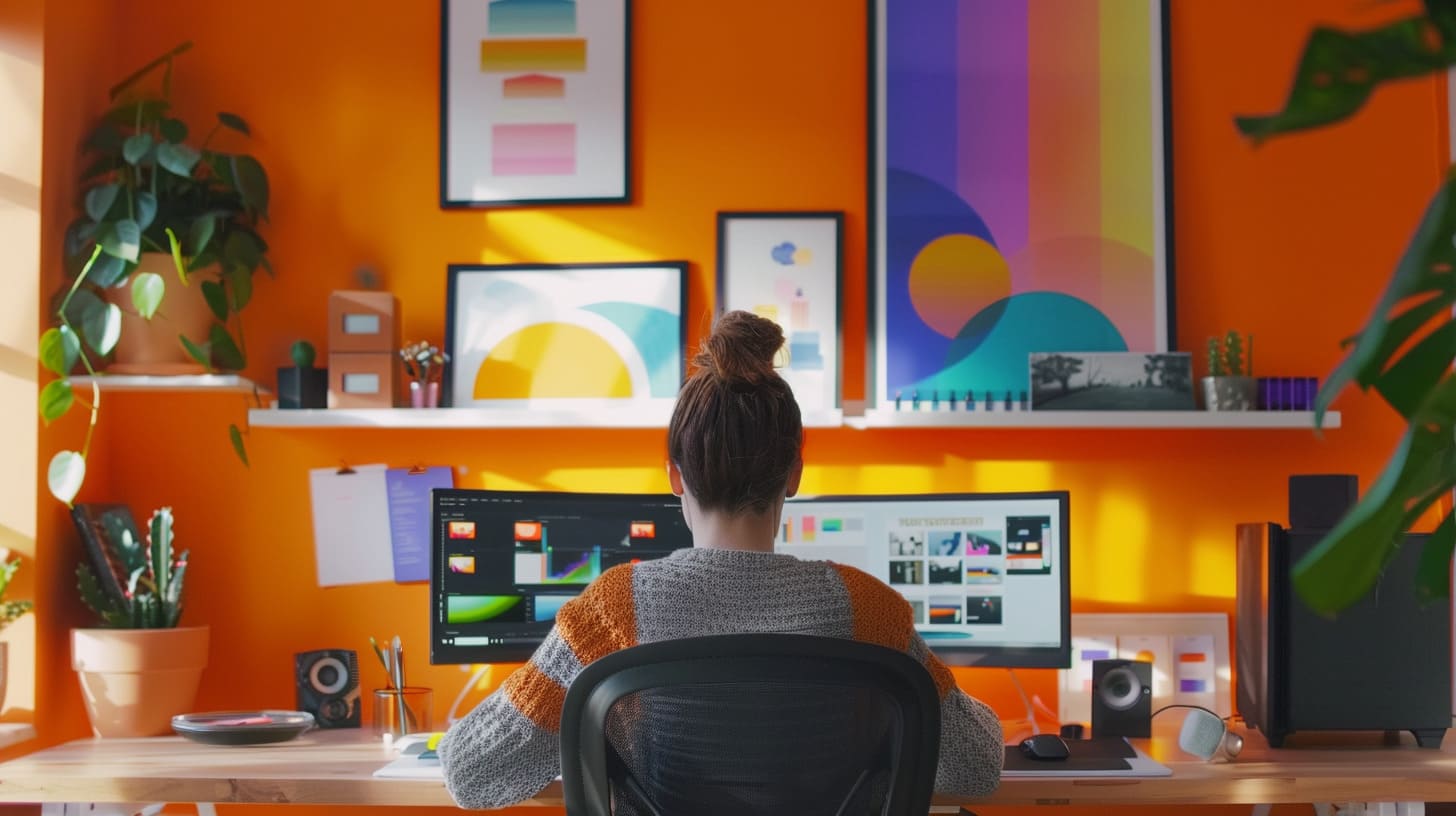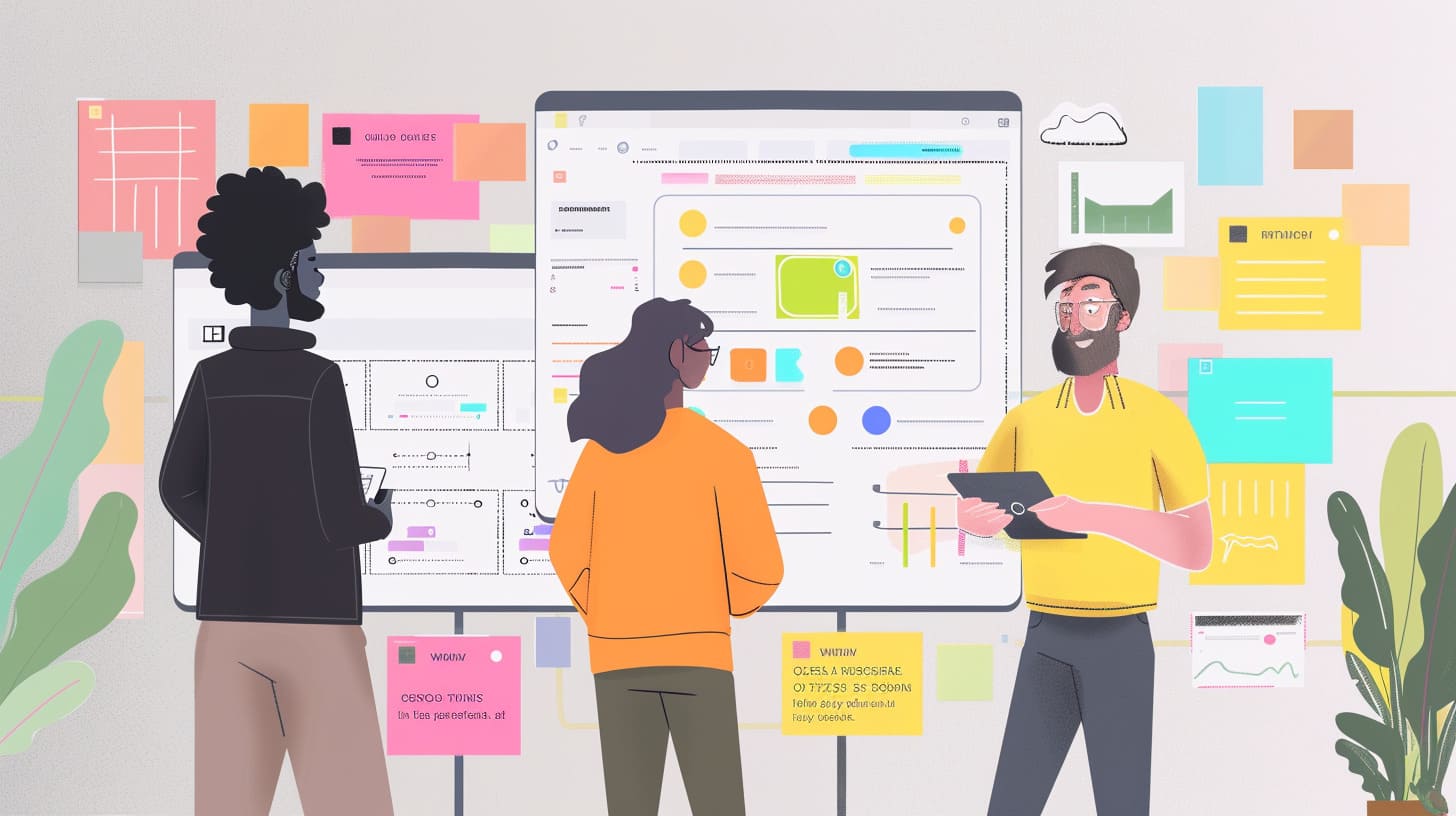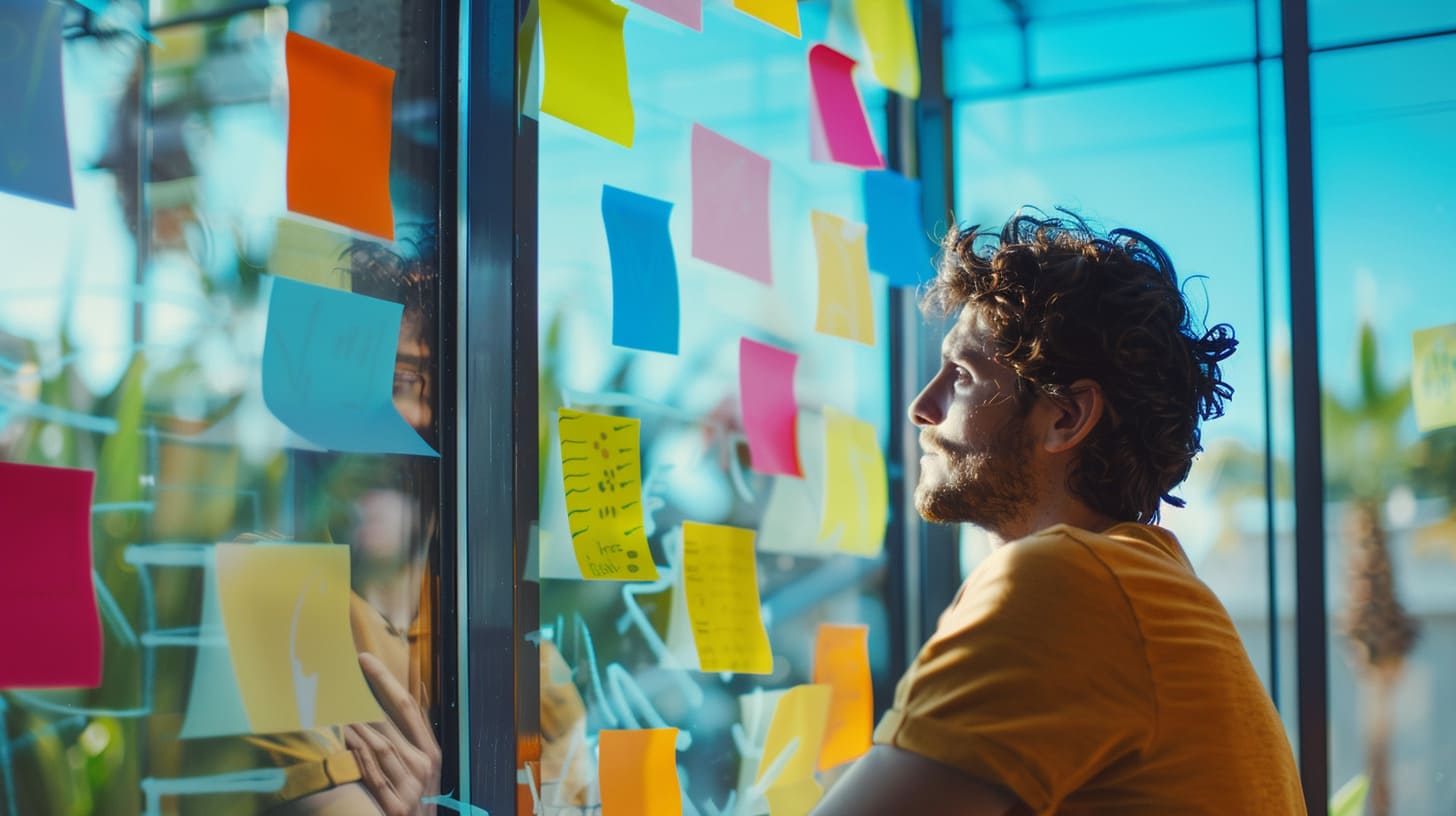A stylescape is a visual representation that captures the essence of a brand’s identity. It is a key tool in branding, acting as a bridge between abstract brand concepts and tangible design elements. A well-crafted stylescape serves multiple purposes: it helps maintain consistency across different brand touchpoints, builds emotional connections with the audience, and differentiates the brand in a competitive market.
Components of a Stylescape

Colors: Colors are crucial in evoking emotions and conveying the brand’s personality. Consistent usage of colors aids in brand recognition.
Textures: Textures add depth and tactile quality to a stylescape. They can evoke feelings of luxury, sophistication, or playfulness depending on their application.
Typography: Typography communicates the brand’s tone and messaging. Consistent typography ensures cohesion and strengthens brand identity.
Imagery: Imagery showcases the brand’s values and personality. It helps create an emotional connection with the audience and enhances brand storytelling.
Together, these elements work in harmony to create a cohesive and compelling visual narrative that accurately represents the brand.
Planning Your Stylescape
Creating a stylescape starts with thorough planning. This section will guide you through setting clear objectives, gathering inspiration, and using storytelling to convey your brand’s values.
Set Clear Objectives
Begin by defining what you want your stylescape to achieve. Whether it’s to enhance brand recognition, evoke specific emotions, or align with a new product launch, having clear goals will guide your design decisions.
- Define the Brand’s Goals and Objectives: Clearly articulate your brand’s goals, target audience, and key messaging.
- Establish Key Performance Indicators (KPIs): Identify metrics such as engagement, conversion rates, or brand awareness to measure the success of your stylescape.
- Timeline and Budget: Ensure your objectives are achievable within your timeframe and budget.
Research and Inspiration
Before diving into design, immerse yourself in research and gather inspiration. This step is crucial in setting the aesthetic and emotional tone of your stylescape.
- Research Your Target Audience: Understand their needs, desires, and pain points to create a design that resonates with them.
- Analyze Competitors: Look at what others in your industry are doing. Identify what works and what doesn’t.
- Trends and Innovations: Stay updated with the latest trends, like immersive experiences, sustainable design, dynamic typography, and personalization.
Storytelling
Incorporate storytelling techniques to create a deep connection with your audience. Here are some best practices:
- Know Your Audience: Craft a narrative that resonates with their needs and emotions.
- Clear Narrative Structure: Use a clear beginning, middle, and end to guide your audience through the story.
- Emotional Connections: Utilize visuals, sounds, and narrative elements to evoke emotions.
- Show, Don’t Tell: Demonstrate your brand’s values and mission through compelling visuals and narratives.
- Interactive Elements: Engage users with animations, micro-interactions, and other interactive elements.
- Concise Messaging: Keep your narrative focused to avoid overwhelming your audience.
By following this structured approach, you’ll ensure your stylescape not only looks cohesive but also effectively communicates your brand’s essence and mission.
Step-by-Step Process to Create a Stylescape
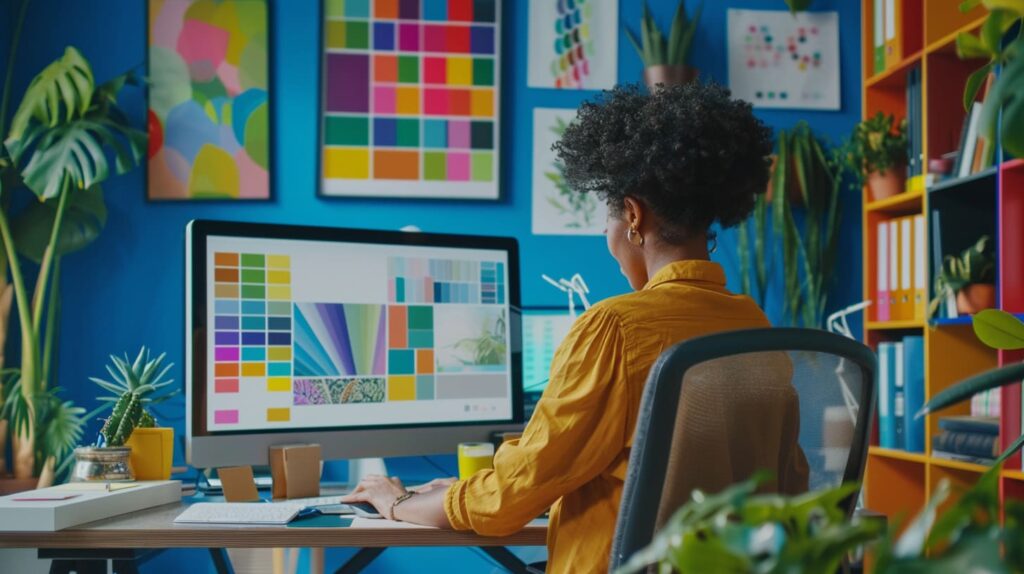
Creating a stylescape involves several crucial steps to ensure it effectively represents your brand. Here’s a comprehensive guide to walk you through the process:
Step 1: Gathering and Organizing Assets
Start by collecting all the visual and tactile elements that align with your brand’s vision. This includes images, colors, patterns, fonts, and textures.
- Digital Asset Management (DAM) Tools: Utilize DAM tools like Adobe Experience Manager, Widen, or Canto to store and organize your digital assets.
- Cloud-Based Storage: Use services like Google Drive, Dropbox, or Microsoft OneDrive for easy file sharing and collaboration.
- Mood Board Creation Tools: Online tools like Pinterest, Moodboard, or Niice can help you gather and organize visual inspirations.
- Physical Asset Collection: Collect fabrics, materials, or objects that match your desired aesthetic. Take high-quality photos or scans to digitize these assets.
Step 2: Layout and Composition
Once you have all your assets, it’s time to arrange them into a cohesive layout. This step is crucial for visually communicating your brand’s story and identity.
- Organize Your Elements: Group similar items together to create visual harmony. Use grids or templates to keep everything aligned.
- Balance Visual Weight: Ensure that no single element overpowers the others. Distribute colors, images, and text evenly across your layout.
- Hierarchical Placement: Place the most important elements, like brand logos or primary images, in focal areas to grab attention.
Step 3: Adding Sensory Elements
Enhance the stylescape experience by incorporating sensory elements. This can make your stylescape more engaging and immersive.
- Texture Integration: Use tactile elements like fabric swatches or textured paper to add depth. Digital simulations can also mimic these textures.
- Sound Design: Integrate sound effects, music, or voiceovers that complement your visual theme. Tools like Audacity or Adobe Audition can help you edit and incorporate audio elements.
- Interactive Elements: Use touchscreens, VR, or AR to make your stylescape interactive. This can provide a richer, more dynamic experience.
Step 4: Review and Refine
After assembling your stylescape, it’s essential to review and refine it with stakeholders to ensure it meets your objectives.
- Digital Review Platforms: Platforms like InVision, Figma, or Adobe XD allow for collaborative feedback and real-time commenting.
- Clear Objectives and Criteria: Establish clear goals for what your stylescape should achieve. This ensures all stakeholders are aligned during the review process.
- Iterative Refinement: Implement stakeholder feedback and continually refine your stylescape. This iterative process helps achieve the best possible outcome.
- Version Control: Keep track of changes and maintain version control to ensure everyone is reviewing the most current version.
By following these steps, you’ll be able to create a stylescape that effectively represents your brand and resonates with your audience. Ensure each phase is carefully executed to achieve a cohesive and compelling visual narrative.
Tools and Materials Needed

Creating a compelling stylescape requires the right tools and materials. In 2023, several cutting-edge digital tools are available to streamline this process:
- Adobe XD: This user experience design software is perfect for creating and prototyping digital products, including stylescapes.
- Figma: A cloud-based UI design tool that supports real-time collaboration, making it ideal for team-based stylescape creation.
- Pinterest: An excellent platform for creating digital mood boards and gaining inspiration.
- StyleScapes: Specifically designed for stylescape creation with customizable templates and collaboration tools.
Each of these tools offers unique features. Adobe XD and Figma are robust for advanced design and prototyping, while Pinterest focus on visual discovery. StyleScapes is tailored specifically for stylescape creation, providing user-friendly templates and sharing capabilities.
Aside from digital tools, incorporating physical materials can significantly enhance your stylescape:
- Mood Boards: Traditional mood boards provide a tactile experience, adding depth to your visual concepts.
- Fabric Samples: These can be invaluable for understanding texture and color in a physical context.
- Printed Images: They offer a tangible reference that digital tools sometimes lack.
A hybrid approach, utilizing both digital tools and physical materials, can yield the best results. This combination allows for a comprehensive and immersive stylescape creation process.
Examples and Case Studies
Exploring successful stylescapes from various industries can offer valuable insights and inspiration. Let’s dive into some notable examples and the impact they have had.
Notable Stylescapes Across Different Industries
- Retail: IKEA’s “IKEA Home”
- IKEA’s stylescape allows customers to design and visualize their ideal home space using IKEA products. This interactive tool enhances customer engagement by enabling users to see how different furniture and decor items fit into their living space.
- Automotive: Tesla’s “Design Studio”
- Tesla’s online stylescape enables customers to customize and visualize their dream car. This personalized experience has boosted customer satisfaction and engagement, making the car-buying process more immersive.
- Fashion: Louis Vuitton’s “Tambour Watch Configurator”
- This stylescape allows customers to design and personalize their luxury watches, providing a tailored experience that strengthens brand loyalty and identity.
- Travel: Marriott’s “Virtual Hotel”
- Marriott offers an immersive virtual hotel experience, allowing customers to explore hotel rooms and amenities virtually. This stylescape enhances customer confidence and satisfaction by providing a realistic preview of their stay.
- Food and Beverage: Starbucks’ “Coffee Studio”
- Starbucks lets customers design and customize their own coffee blends and flavors. This interactive stylescape not only engages customers but also promotes brand identity through personalized experiences.
Impact of Stylescapes
Successful stylescapes yield significant benefits:
- Increased Engagement: Users spend more time on websites, interacting with products in a more immersive way.
- Improved Brand Identity: Stylescapes reinforce brand values and create a cohesive brand experience across all touchpoints.
- Enhanced Customer Experience: Users feel more connected to the brand, leading to higher satisfaction and likelihood of purchase.
- Increased Conversions: There is a noticeable rise in purchase intent and conversion rates after users interact with stylescapes.
Design Tips and Best Practices
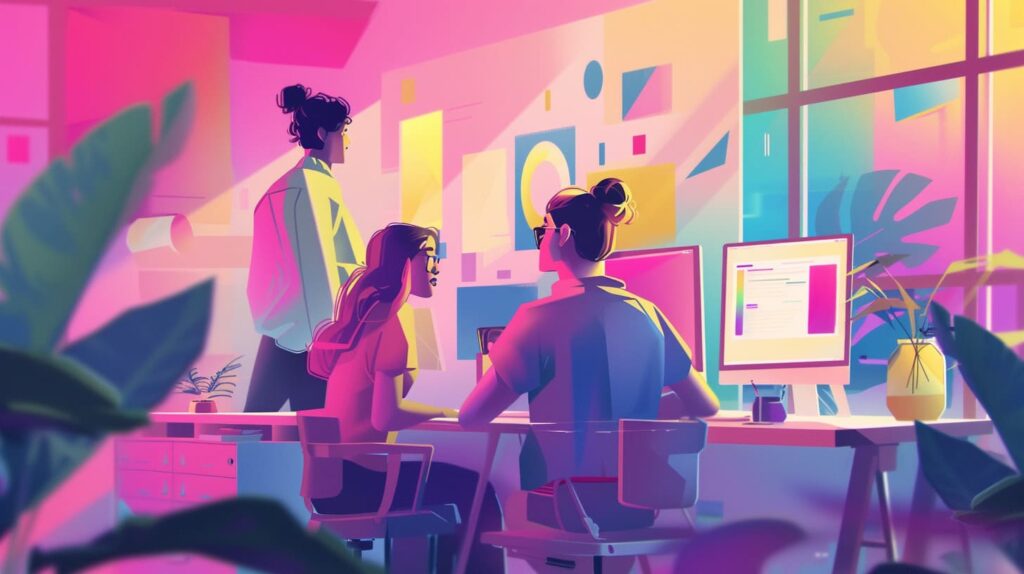
When creating a stylescape, selecting the right elements is essential for making an impactful and cohesive design. Here are some design tips and best practices to guide you:
Choosing the Right Elements
Colors: In 2023, designers lean towards neo-brutalism, incorporating earthy tones, bold contrasts, and vibrant accents to create engaging stylescapes. Pastel colors are also popular for adding softness and approachability.
Fonts: Variable fonts are trending due to their dynamic styling capabilities. Experiment with 3D typography and kinetic typography to add depth and movement.
Textures: Use natural textures like wood, stone, and fabric to bring a sense of realism. High-fidelity textures created through 3D modeling and rendering techniques can greatly enhance the user experience.
Ensuring Inclusivity and Accessibility
Inclusivity and accessibility should be at the forefront of your design process. Here are some key practices:
Color Contrast: Ensure strong contrast between background and foreground elements for readability.
Font Legibility: Select clear, readable, and scalable fonts to accommodate users with dyslexia or visual impairments.
Audio Descriptions: Offer audio descriptions to make your stylescape accessible to visually impaired users.
Cultural Sensitivity: Avoid cultural appropriation and stereotyping by using diverse and representative imagery and themes.
User Testing: Conduct tests with a diverse group of users to identify and address any accessibility issues.
Dynamic and Adaptive Design
Using AR and VR technologies can transform your stylescape into an interactive experience. Here’s how:
Immersive Storytelling: VR can create 360-degree experiences that immerse users into the stylescape.
Interactive Exploration: AR allows users to interact with virtual objects, enhancing engagement.
Dynamic Adaptation: Machine learning can tailor the stylescape to individual preferences and behaviors.
Virtual Try-On: Let users virtually try on products, improving their shopping experience.
Accessibility Features: Use AR and VR to integrate virtual sign language interpretation or audio descriptions, ensuring equal access to information.
By focusing on these design tips and best practices, you can create a stylescape that is not only visually appealing but also inclusive and adaptive, catering to a wide and diverse audience.
Common Mistakes to Avoid
Creating a stylescape is an intricate process that demands attention to detail. However, certain pitfalls can derail even the most well-intentioned designs. Here are some common mistakes to avoid:
#1 Overcomplicating the Design
One of the most frequent errors in stylescape design is overcomplication. Designers often add unnecessary elements due to a lack of clear goals, insufficient research, or designing based on personal taste rather than user needs. To avoid this:
- Set Clear Objectives: Define what you aim to achieve with your stylescape.
- Conduct Thorough Research: Understand your target audience’s preferences and needs.
- Embrace Simplicity: Recognize that a simple design can be both effective and engaging.
#2 Ignoring User Feedback
User feedback is invaluable for refining your stylescape. Ignoring it can lead to designs that don’t resonate with your audience. Incorporate feedback to ensure your stylescape meets user expectations. Methods to do this include:
- Iterative Design: Continuously refine your design based on feedback.
- Prioritization: Focus on user needs and preferences to enhance engagement.
- Simplification: Use feedback to make your design more intuitive.
#3 Inconsistency Across Platforms
Ensuring your stylescape is consistent across digital and physical platforms is crucial for maintaining a cohesive brand image. Common mistakes include inconsistent use of colors, fonts, and imagery. To maintain consistency:
- Develop a Design System: Create guidelines for typography, color, and imagery.
- Use a Single Source of Truth: Maintain a centralized design library.
- Conduct Regular Audits: Periodically review your stylescape to ensure consistency.
Avoiding these common mistakes will help you create a cohesive and effective stylescape that resonates with your audience and maintains brand integrity.
Conclusion
A well-crafted stylescape is a powerful tool in your branding arsenal. It brings your brand’s vision to life, creating an immersive and memorable experience for your audience. By integrating elements like colors, textures, typography, and imagery, a stylescape provides a cohesive visual narrative that resonates with your target market.
Implementing recent trends such as immersive experiences, sustainable design, and personalized elements can elevate your stylescape, making it both modern and impactful. Remember to keep your design consistent across all platforms and continually refine it based on feedback and data.
By applying these insights, you can create a stylescape that not only captures attention but also builds lasting connections with your audience. Start today and watch your brand’s story unfold in a visually compelling way.
